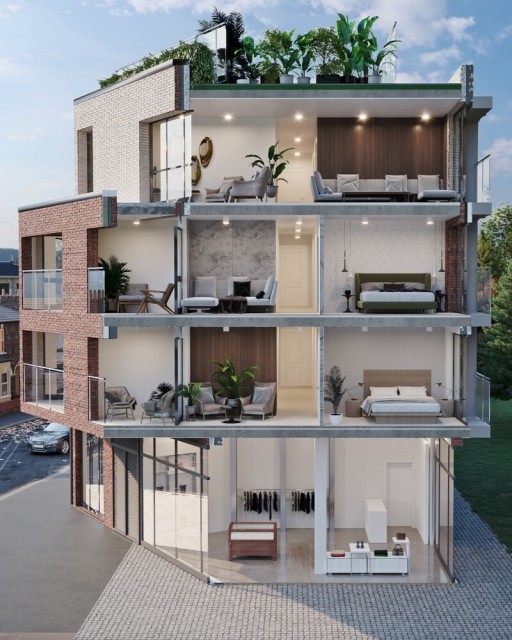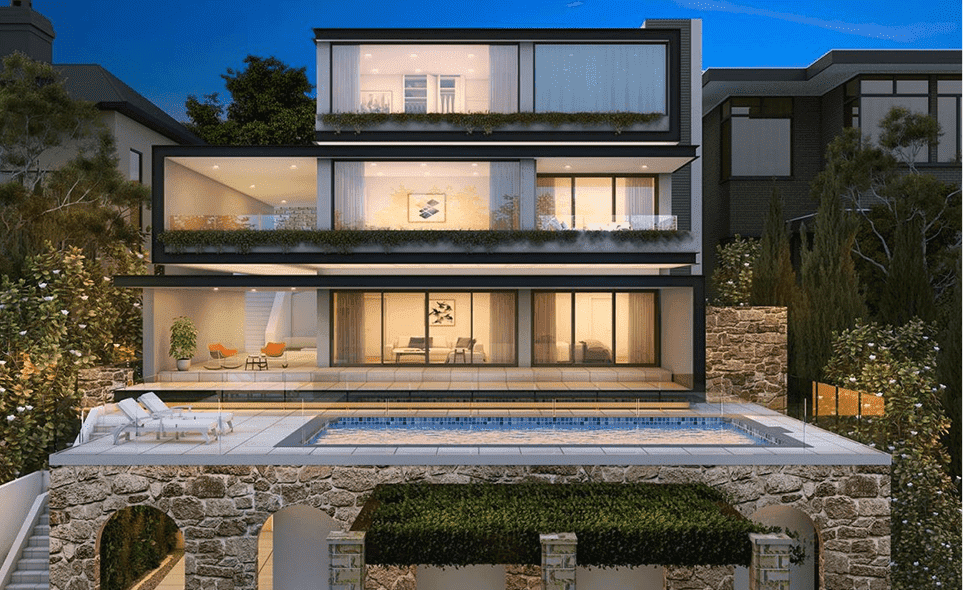Residential Architecture Homes Designed for Comfort, Aesthetics, and Functionality
Residential Architecture Homes Designed for Comfort, Aesthetics, and Functionality
Blog Article
Leading Fads in Residential Design You Must Find Out About
As residential architecture remains to develop, several engaging patterns are shaping the method we make and inhabit our home. Trick growths such as sustainable building methods, the integration of smart home innovation, and the surge of modular homes highlight a substantial shift towards both performance and ecological responsibility. In addition, ideas like open strategy living and biophilic style are redefining our communication with space and nature. Understanding these trends not only notifies style options yet additionally exposes more comprehensive implications for way of living and area - residential house architect. What might these technologies imply for the future of residential living?
Sustainable Building Practices
A boosting number of residential projects are accepting lasting structure methods, driven by a growing awareness of environmental impact and energy performance. This change is identified by the assimilation of eco-friendly products, energy-efficient layouts, and innovative construction methods. Property owners and builders are progressively prioritizing the use of renewable energies, such as bamboo and recycled metals, which not only reduce the carbon impact but likewise boost the durability and aesthetic appeal of buildings.
Integrating energy-efficient systems is one more essential facet of sustainable building - residential house architect. Functions such as high-performance insulation, energy-efficient home windows, and solar panels are becoming standard in new residential styles. These components not only contribute to lower energy intake but also supply significant lasting savings for house owners
In addition, the layout of sustainable homes frequently emphasizes all-natural light and ventilation, lowering the reliance on fabricated lighting and climate control systems. Landscaping methods, such as xeriscaping, additional advertise sustainability by decreasing water usage.
As the need for lasting living solutions remains to climb, the household design industry is positioned to innovate and adjust, ensuring that future homes are not just environmentally accountable however functional and additionally comfy for their owners. - residential house architect
Smart Home Technology
Smart home technology is changing the way home owners connect with their living rooms, improving power, benefit, and safety monitoring. This innovative approach integrates different devices and systems, enabling customers to manage their homes from another location or with automated processes. Central to this trend is making use of wise gadgets such as thermostats, lighting, safety electronic cameras, and devices, all linked through the Net of Things (IoT)
One of the most appealing functions of wise home modern technology is the capability to personalize setups for ideal power performance. Property owners can keep track of power usage and readjust air conditioning, home heating, and illumination based on their routines, dramatically lowering utility costs. Innovative protection systems equipped with clever locks and monitoring video cameras offer peace of mind, making it possible for remote surveillance and notifies to prospective protection violations.
Integration with voice-activated assistants boosts individual experience, permitting home owners to regulate devices with basic voice commands. As technology remains to advance, the capacity for smart home systems to improve top quality of life expands, making them an important factor to consider in modern domestic architecture. Eventually, smart home technology is not simply a trend yet a basic change towards extra intelligent living settings.
Open Concept Living
Open principle living has become a specifying feature in contemporary residential architecture, identified by the removal of standard barriers in between areas. This layout ideology promotes fluidity and connection within the home, enabling a seamless transition between locations such as the kitchen, eating, and living rooms. By eliminating dividers and walls, open principle layouts produce a sense of spaciousness, promoting a welcoming atmosphere that improves social communication.

Furthermore, this strategy to property design straightens with minimalism, focusing on useful simplicity and aesthetic comprehensibility. Homeowners value the flexibility of these formats, which can be conveniently adapted to reflect personal style via furniture arrangement and style. As open concept living continues to get grip, it continues to be a testament to developing family dynamics and the desire for homes that improve link and convenience.
Biophilic Style
Biophilic layout has actually come to be increasingly significant in residential architecture, stressing the inherent connection between people and nature. This layout approach looks for to incorporate all-natural elements into living spaces, consequently cultivating a feeling of wellness and improving the high quality of life for owners. By including attributes such as all-natural light, plants, and organic products, biophilic style advertises a harmonious connection in between indoor settings and the natural globe.
Secret elements of biophilic layout consist of big windows that give unblocked views of exterior landscapes, living walls that present greenery right into insides, and open layout that motivate air flow and natural light penetration. Water attributes, both inside and outside the home, offer to produce soothing atmospheres and boost sensory experiences.
In addition, making use of sustainable materials not only supports ecological stewardship but additionally adds to healthier interior air high quality. As awareness of ecological problems boosts, homeowners are progressively prioritizing layouts that reflect their connection to nature. Essentially, biophilic design not just elevates aesthetic allure but likewise addresses mental and emotional requirements, making it a vital fad in modern residential style.
Modular and Prefab Homes

Furthermore, prefab and modular homes are designed with sustainability in mind. Lots of suppliers use environment-friendly products and energy-efficient systems, such as photovoltaic panels and progressed insulation methods, adding to minimized energy intake and reduced energy expenses for home owners. The adaptability of style choices permits customization, satisfying diverse visual choices and practical requirements.
As the demand for cost effective housing remains to rise, prefab and modular homes offer a viable solution, dealing with both financial and ecological challenges. Neighborhoods are progressively identifying the capacity of these frameworks, integrating them into metropolitan and country setups. In general, the trend towards prefab and modular homes represents a change toward extra sustainable, efficient, and versatile living settings, making them a critical facet of modern residential architecture.
Conclusion
Sustainable structure practices and clever home modern technologies improve effectiveness and convenience, while open principle living and biophilic design foster social interaction and a link to nature. The rise of modular and prefab homes supplies customizable and economical options, reflecting a wider change in the direction of practical and responsible living.
Key growths such as lasting building methods, the assimilation of wise home technology, and the rise of modular homes underscore a considerable change in the direction of both functionality and environmental obligation.The surge of modular and prefab homes has changed the household architecture landscape, offering innovative solutions for efficient and sustainable living.Furthermore, modular and prefab homes are developed with sustainability in mind. In general, the pattern toward modular and prefab homes signifies a change towards extra sustainable, efficient, and versatile living settings, making them an you could try this out essential facet of contemporary household design.
Sustainable structure practices and clever home technologies boost performance and benefit, while open principle living and biophilic design foster social communication and a connection to nature.
Report this page